Qualified Health Claims: Defending Health Freedom
Posted: June 2, 2020 | By: Steve Wallach
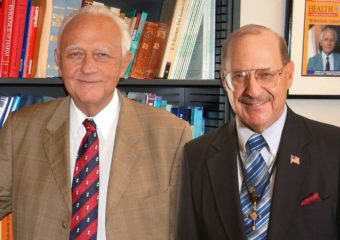 By Youngevity Co-founder and CEO Steve Wallach
By Youngevity Co-founder and CEO Steve Wallach
My father’s vision has always been about improving lives through better health. And I’ve always been inspired by his commitment to ensure the public has access to real and factual information about nutrition. As I alluded to in our May blog, my father (Dr. Joel Wallach) began fighting to inform the public about the benefits of essential nutrients long before mainstream acceptance. Once he helped form Youngevity in 1996, our company continued these efforts, lobbying the FDA for qualified health claims to support the crucial ingredients we use in our products.
But above all, my father was committed to getting these facts in front of the general public. A commitment that was only strengthened in 1979, when he was encouraged by respected colleague, Clinton Miller, to attend the National College of Naturopathic Medicine (now called the National University of Natural Medicine). This earned him an ND degree which qualified him to begin treating human patients. It also made him one of the first people with a traditional and formal scientific education to cross over to the new-age approach.
In subsequent years, many key figures have joined the cause to overturn the FDA’s suppression of this vital information—I couldn’t be prouder to be part of this cause. And one of the central players in this journey is our legal advisor, Jonathan Emord, who you’ll get to know a lot better as you read on. Here, I examine the timeline of significant events in this ongoing battle, which at its core is essentially a fight for the freedom of speech and information. I also provide key takeaways for each court case and legislative action, as they relate to our overall mission.
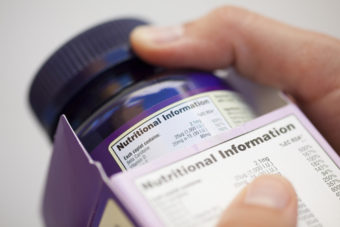 1990: Congress Enacts the Nutrition Labeling and Education Act (NLEA)
1990: Congress Enacts the Nutrition Labeling and Education Act (NLEA)
There are three main reasons this Act continues to be crucial: (1) it established quality standards for food, drugs, medical devices, and cosmetics manufactured and sold in the United States. (2) It helped protect dietary supplements and foods that make health claims from being designated as drugs (e.g. Youngevity). And (3), it established that health claims for conventional foods had to meet significant scientific agreement.
But importantly, Congress also told the FDA to establish a separate standard for dietary supplement claims. Specifically, Congress wanted to authorize health claims for several nutrient-disease relationships, including one between folic acid and Neural Tube Defects (NTDs). The FDA’s response became an all too familiar pattern. In 1993 it applied the significant scientific agreement standard and banned claims associating folic acid with NTDs. But it reversed its position later that same year, authorizing certain claims could be used.
KEY TAKEAWAYS: firstly, the approval of certain folic acid claims was a small but positive step in the right direction. Secondly, significant scientific agreement would emerge as the FDA’s fundamental line of defense. But as you’ll soon see, it also became their Achilles heel.
1994: The First of Many Legal Battles to Come
On January 28, Durk Pearson and Sandy Shaw requested from the FDA what’s known as the Folic Acid Claim: .8 mg of folic acid in a dietary supplement is more effective in reducing the risk of neural tube defects than a lower amount in foods in common form. It also requested authorized claims for omega-3 fatty acids, fiber, and antioxidant vitamins. Not surprisingly, the FDA rejected their requests (significant scientific agreement). Its final ruling established the daily recommended intake for folate, and approved four health claims for farina fortified with folate. It also allowed foods, but not dietary supplements, to use these claims on their labels if they qualified as a good source of folate.
KEY TAKEAWAY: despite initial setbacks, Pearson and Shaw’s case set a bold legal precedent that ultimately helped turn the tide against the FDA.
1994: DSHEA Act Changes It All
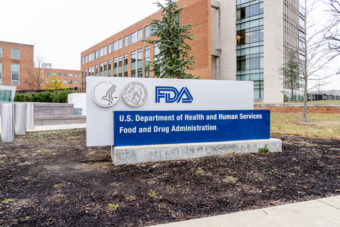
In the late 1980s and early 1990s, Congress evaluated a bill that would allow tighter, FDA imposed labeling regulations for supplements. In response, many health food companies urged the federal government to reject these laws and began telling the public the FDA was essentially trying to ban dietary supplements altogether.
The bill was even opposed by famous people like Mel Gibson, who made a bold statement in this notable ad at the time. Natural health industry icon and chief executive of Nature’s Plus, Gerald Kessler, also helped lead efforts, accusing the FDA of having “a bias against the supplement industry for 50 years.” Feeling pressure from all sides, Senators Orrin Hatch and Tom Harkin introduced the Dietary Supplement Health and Education Act (DSHEA) in 1994.
On October 25, 1994, President Bill Clinton signed the Act into law, saying that “After several years of intense efforts, manufacturers, experts in nutrition, and legislators, acting in a conscientious alliance with consumers at the grassroots level, have moved successfully to bring common sense to the treatment of dietary supplements under regulation and law.”
KEY TAKEAWAY: without the DSHEA Act, it’s hard to imagine how a company like Youngevity could be where it is today. Sometimes it literally takes an act of congress to change something fundamentally wrong, and this is a good example of that.
DSHEA Impact On Supplement Companies
Part of the DSHEA Act was carving out a track for supplements (the health claim petition process). But the FDA regulates dietary supplements differently than “conventional” food and drug products. It’s essentially the crossover between food, drugs, and supplementation, because it allows companies like Youngevity to petition the FDA for claims. But it becomes a “what if” situation and the answer determines how a product is categorized.
For example, Vitamin C is considered a drug because it’s an approved FDA treatment for scurvy. But it’s also in many supplements, which simply means any product taken orally that contains an ingredient intended to supplement the diet. These ingredients include vitamins, minerals, herb/botanicals, amino acids, enzymes, microbial probiotics, and metabolites. Of course, Vitamin C also occurs naturally in many foods we eat. And unlike drugs, dietary supplements are considered safe until proven unsafe. So, how can an ingredient like Vitamin C be classified as a food, drug, and supplement at the same time? It’s this kind of ambiguity that hinders the FDA from properly regulating and defining these classifications.
It’s also quite telling that the FDA has gone to such lengths to prevent qualified health claims for a wide range of nutrients. Like any business, profit is the bottom line for the FDA. And any product, nutrient based or otherwise, that directly competes with FDA approved drugs isn’t likely to get the attention and support it deserves. This is why Youngevity fights to expand the health claim petition process, to provide truth about the benefits of nutrition. And even though the DSHEA Act had passed, the health claim petition process had basically stalled. In typical bureaucratic fashion, the FDA essentially sat on the bill, sighting a wide range of excuses for its lack of initiative.
KEY TAKEAWAYS: DSHEA is an important milestone that became mired in FDA bureaucracy. Nobody had broken down the FDA’s defenses yet, but that would soon change.
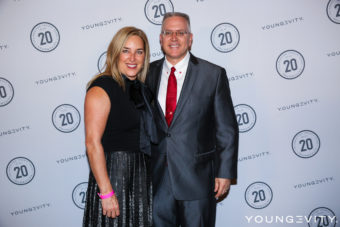 1995 – 1999: Enter Jonathan Emord – A Pivotal Player in Youngevity’s Efforts
1995 – 1999: Enter Jonathan Emord – A Pivotal Player in Youngevity’s Efforts
Despite their agency defeat in 1994, Durk Pearson and Sandy Shaw were not easily deterred. In 1995 they sued the FDA for suppressing their folic acid, omega-3 fatty acid, fiber, and antioxidant vitamin claims. In 1999, the Court of Appeals directed the FDA to reconsider Pearson and Shaw’s claims. Pearson and Shaw were represented by Jonathan Emord of Emord & Associates, the man who helped “break the barrier” and soon became Youngevity’s greatest legal ally and moral supporter.
Under the First Amendment, The Court held that the FDA can’t ban health claims simply because science supporting them is inconclusive or doesn’t meet significant scientific agreement. Further that it must use clear and accurate disclaimers instead of resorting to an outright ban. These were major victories for anyone who advocates freedom of speech. This is also when I met Jonathan Emord, and I knew he was the right person to represent Youngevity. Hand selected out of law school by the Reagan Administration because of his background in constitutional law, Emord was invited to work as an attorney in the Federal Communications Commission’s (FCC’s) FM Branch at a time when that agency was involved in major deregulation efforts.
Thereafter, he continued fighting for full First Amendment freedom for the broadcast media in private law firms and at the Cato Institute, which ultimately led to the inception of Emord & Associates 25 years ago. It wasn’t long after we met that we started laying the groundwork to petition the FDA for qualified selenium health claims.
KEY TAKEAWAYS: this marks the first time the FDA is called out for using the significant scientific agreement defense. And, of course, it’s when I met Jonathan Emord.
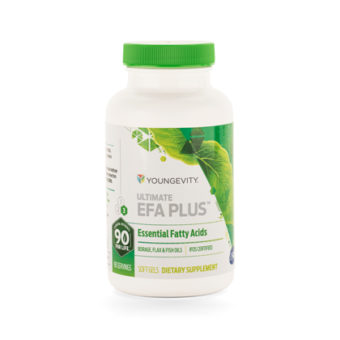 2000: Emord Notches A Win for Omega-3 Fatty Acids
2000: Emord Notches A Win for Omega-3 Fatty Acids
In 2000, Emord helped get a modified health claim for dietary supplements containing omega-3 fatty acids. But the claim the FDA proposed and approved was too wordy and complex for the average person to understand; it also contradicted the American Heart Association’s advice to eat at least two servings of fish per week for omega-3 support of cardiovascular health. Unfortunately, this replaced the simpler, industry-suggested claim of: “Consumption of omega-3 fatty acids may reduce the risk of coronary heart disease.”
Emord and his clients were also disappointed to find out the agency wouldn’t allow this claim to be used on fish, the very food omega-3 is derived from. He also said that companies in the omega-3 business planned to inundate the market with a consumer-savvy revised version of the FDA claim, for both dietary supplements and food products. He then cited the First Amendment for the companies’ decision and the battle for transparency raged on.
KEY TAKEAWAY: at this point, Jonathan really had the FDA’s attention. It was clear he’d do everything in his power to provide this critical health information to the general public.
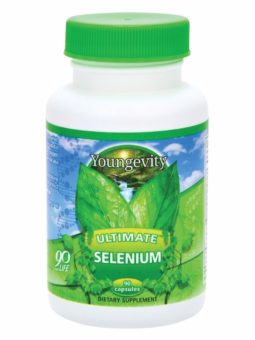 2003: Youngevity Gets Qualified Health Claims for Selenium
2003: Youngevity Gets Qualified Health Claims for Selenium
In 2003 Jonathan Emord represented Youngevity (then called Wellness Lifestyles, Inc.) for the first time as Lead Petitioner before the FDA. This resulted in achieving two cancer-specific claims to support our selenium-related products. And I saw this collaboration as a way to open up my father’s mission to the world. So around this time, I tried to get other supplement companies involved, to help educate the public on these essential nutrients. It struck me that we could form an alliance with our competitors, a type of informational health philanthropy, but none were willing to take the chance.
We petitioned for selenium claims for obvious reasons, namely because of its cancer risk-reduction benefits. But there was an even bigger reason my father was so determined to solidify these claims. He knew it was a major step in revealing the benefits of selenium to health practitioners and the general public. This would include all of the breakthrough research he had conducted showing a selenium deficiency could lead to cystic fibrosis. Crucially, supplement companies could now accompany their selenium-related products with these cancer risk reduction claims, and people became more educated on how selenium could positively impact their health.
KEY TAKEAWAY: more and more people began consuming selenium because they recognized it as an essential nutrient. And eventually, these approved claims helped support my father’s goal of improving proper nutrition for unborn, developing babies to help prevent premature death.
 2010: Emord Scores a Huge Victory For the Cause
2010: Emord Scores a Huge Victory For the Cause
In 2010, Emord & Associates defeated the FDA in Alliance for Natural Health U.S. v. Sebelius. Emord alleged the FDA’s censorship of ten selenium-cancer risk reduction claims violated the First Amendment. The court ordered the FDA to re-consider these claims, and further ruled its denial of certain claims and insistence on lengthy disclaimers for others violated free speech rights under the First Amendment. The court also faulted the FDA for failing to follow the First Amendment, concluding its clampdown on selenium-cancer claims was unconstitutional. Amazingly, this was the seventh case won by Emord & Associates for its clients in federal court against the FDA.
Key Takeaway: this was a landmark case for free speech rights, a blow to FDA censorship, and a defining victory for health freedom.
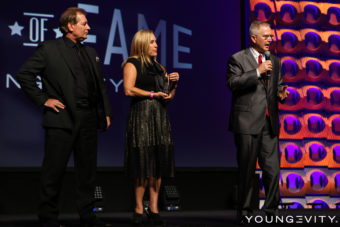 2016: Jonathan Emord Presented with Youngevity Hall of Fame Award
2016: Jonathan Emord Presented with Youngevity Hall of Fame Award
As you can imagine, there are many other significant events in this ongoing story, which I’ll address in upcoming blogs. But it feels only fitting to end this blog with excerpts from Jonathan’s acceptance speech in 2016. Here’s a little of what he had to say after receiving the award and being introduced by our President and CFO, Dave Briskie.
“I met Dr. Joel Wallach shortly after Steve Wallach contacted me to represent Youngevity, and I was struck by the power of his personality and his convictions. There have been cases where Youngevity fought the government because it censored truthful health information. So he (Dr. Wallach) went about to solve it, way before the nutrition revolution, which he helped cause around the world. So, that’s why it’s an honor to be part of this mission, and it’s been a great privilege to liberate us from the federal government’s efforts to censor truthful information that enables people to take charge of their own lives. And not be dependent on the pharmaceutical industry, but to safely achieve health through nutrition.”
Posted in:
Leave a Reply
You must be logged in to post a comment.


Powerful and Excellent referenced article. Thank you Steve.
Excellent article Steve! It helps me understand more of some our company’s history and the major events against the FDA. I was a nurse for 45 years and I am so happy to be free of prescription medication and able to stay healthy with Youngevity products! Thank you
This is fantastic!
Thanks for all involved to get the scientific facts accepted ‘legally’.
So grateful for the Research that Dr. Wallach has done to share these things that maybe have been lost or forgotten from out family conversations..
DSHEA Act
These comments may be important reminders … It was a benefit in my life.
In 1995 they sued the FDA for suppressing their folic acid, omega-3 fatty acid, fiber, and antioxidant vitamin claims. In 1999, the Court of Appeals directed the FDA to reconsider Pearson and Shaw’s claims.
It is and has been a fantastic and humbling honor to be a foot soldier along side many others. We place Very high regard and appreciation for the research and opportunity to share Youngevity’s work to the world.
Respectfully,
David & Pamela DesRosiers
Thank you Steve, Michelle, also Dr. Wallach Dr., Ma Lan, for creating such an incredible opportunity to help save others with your research and powerful teams of Commitment to this great and wonderful movement to fortify our lives nutritiously!